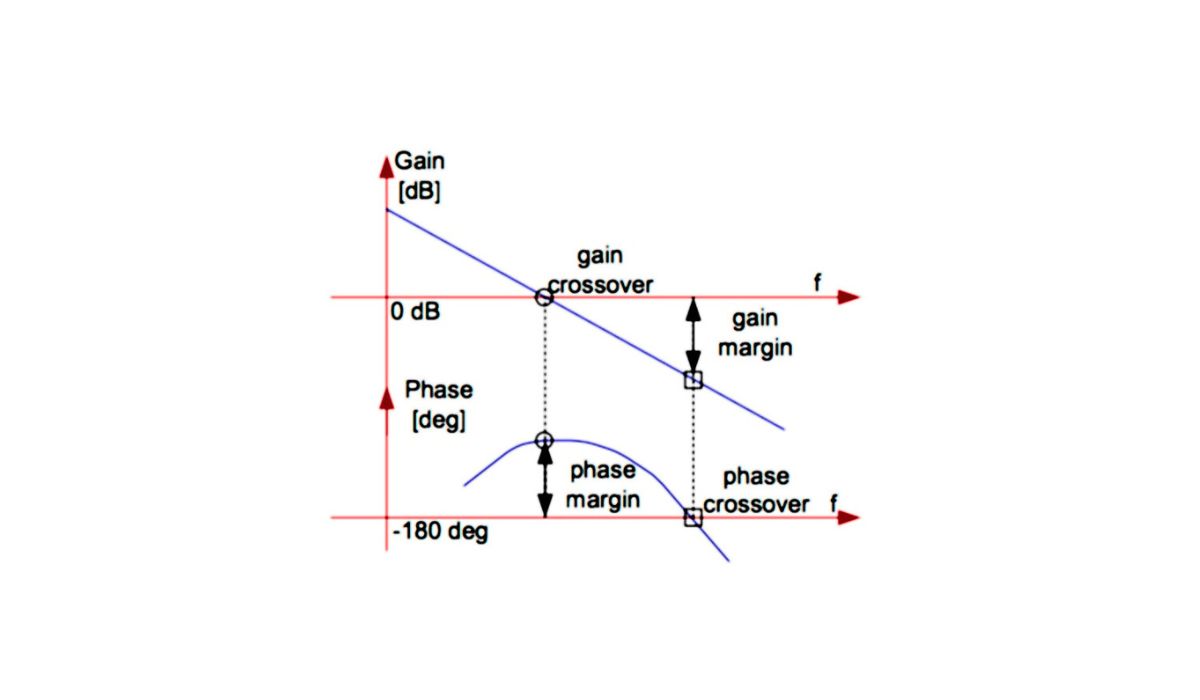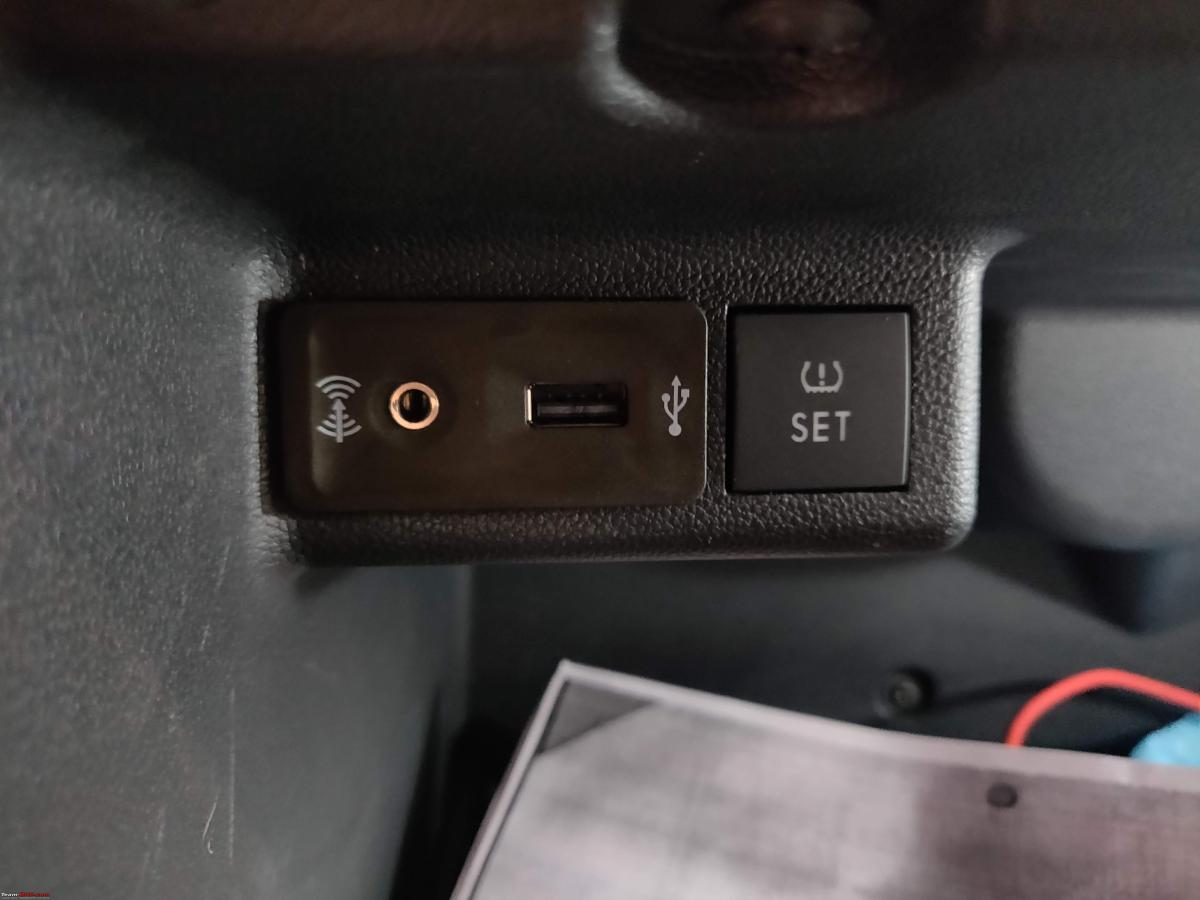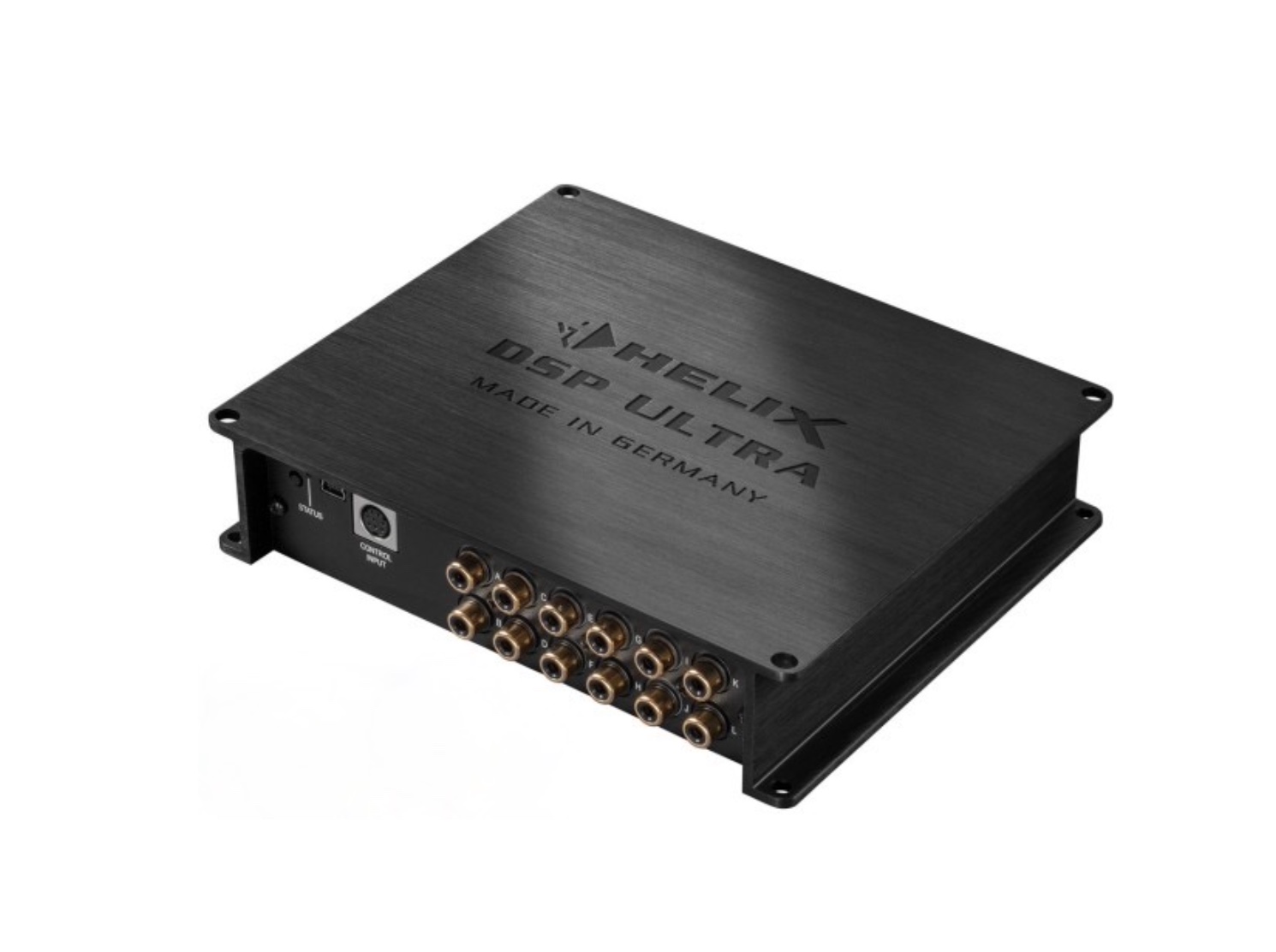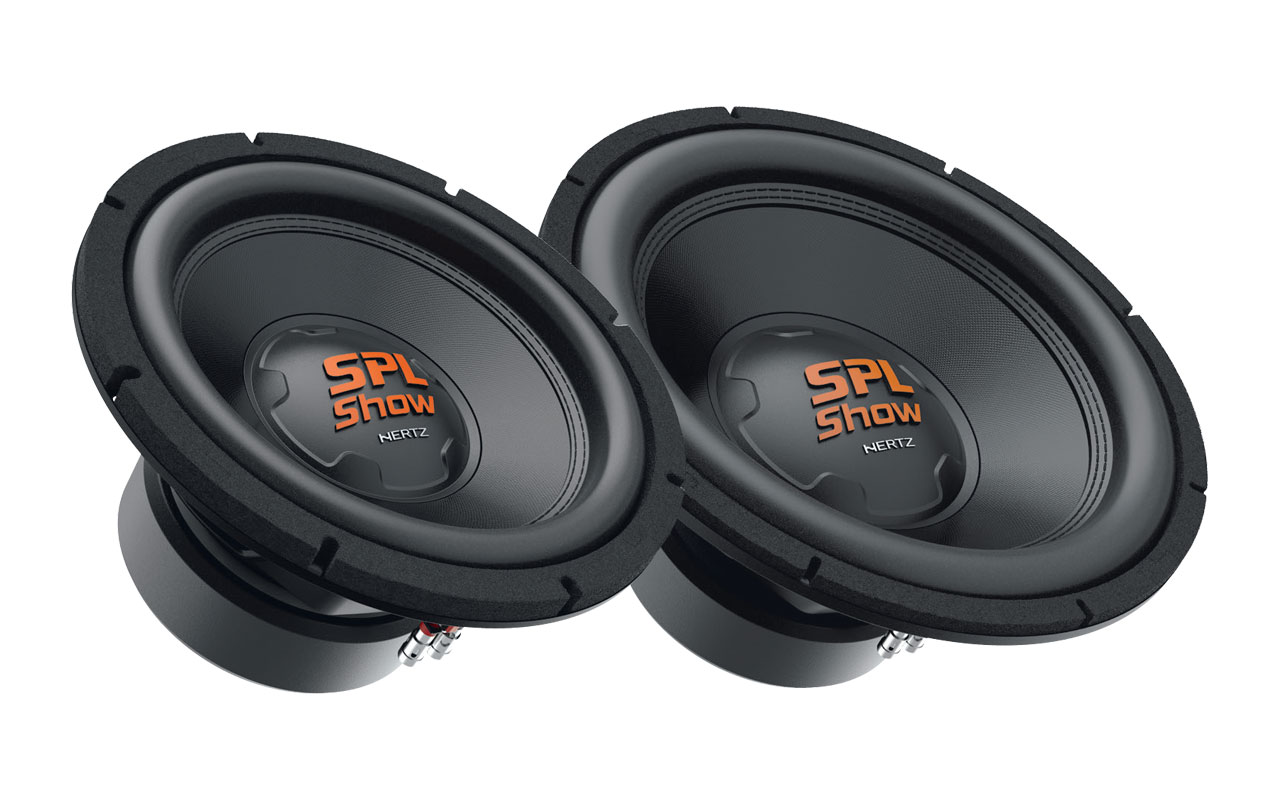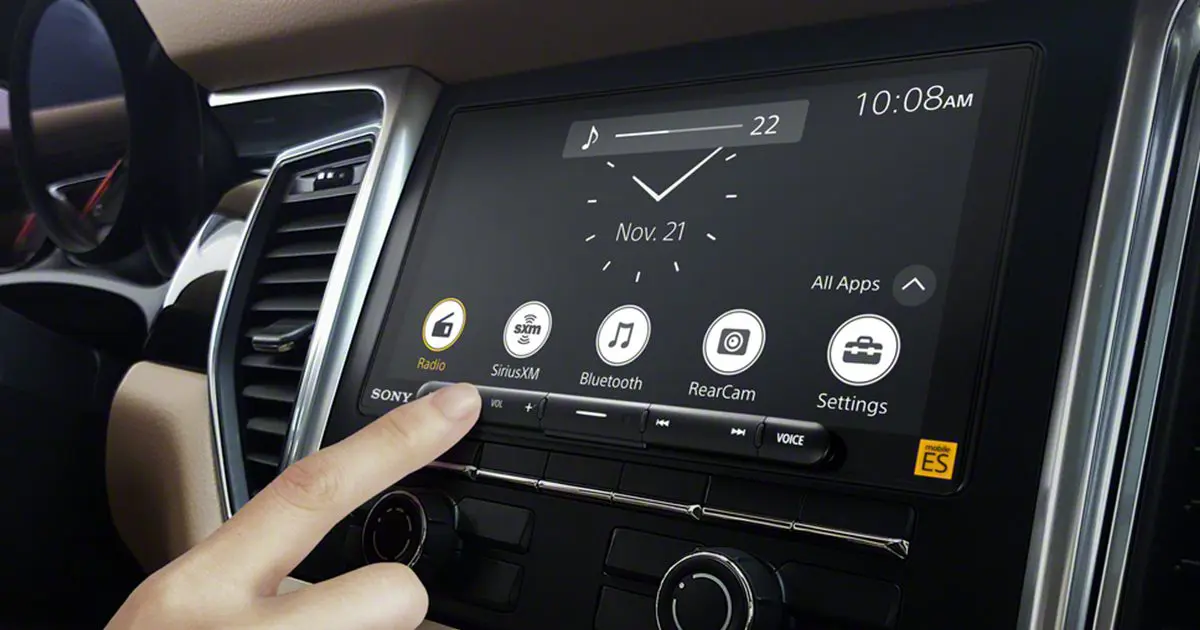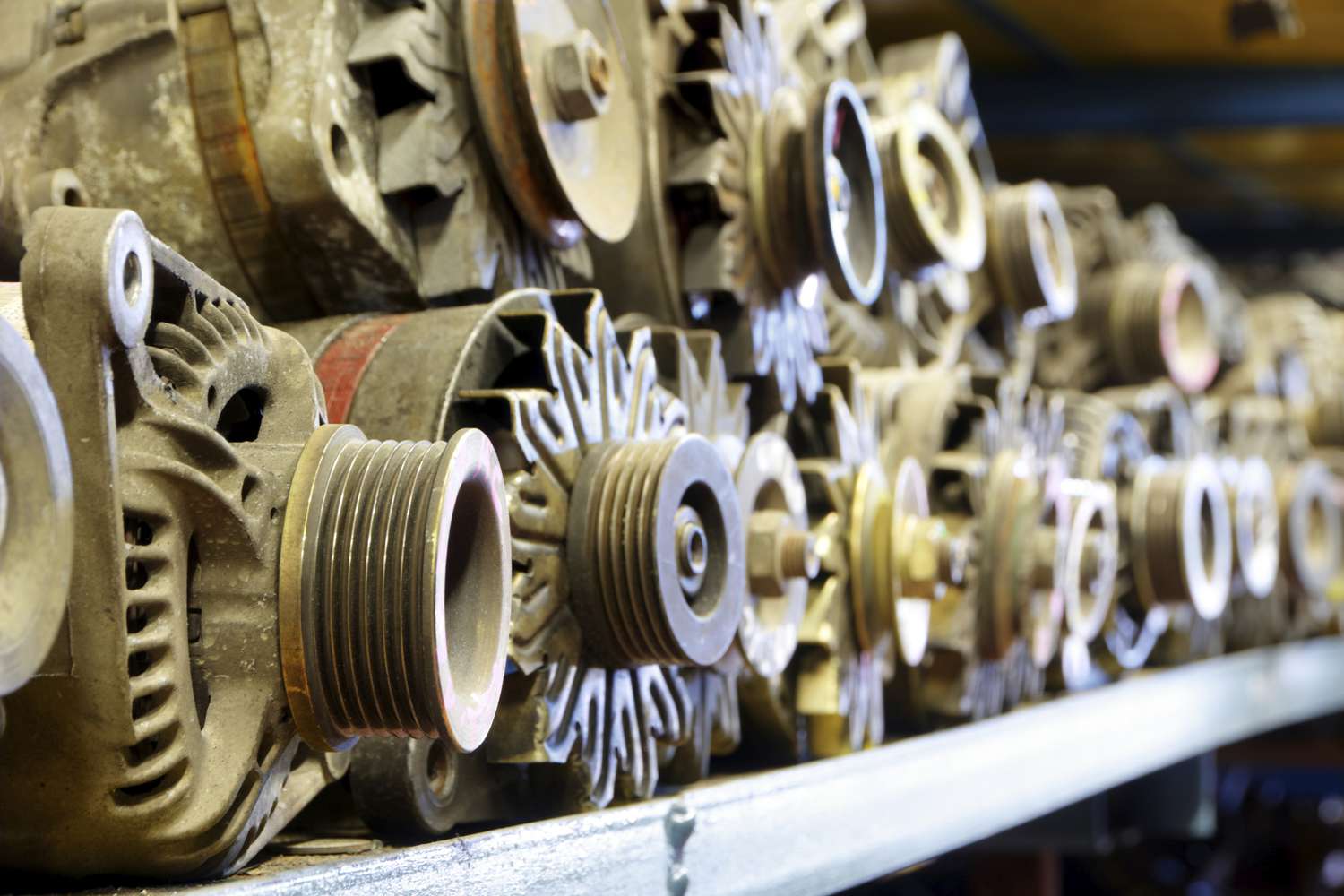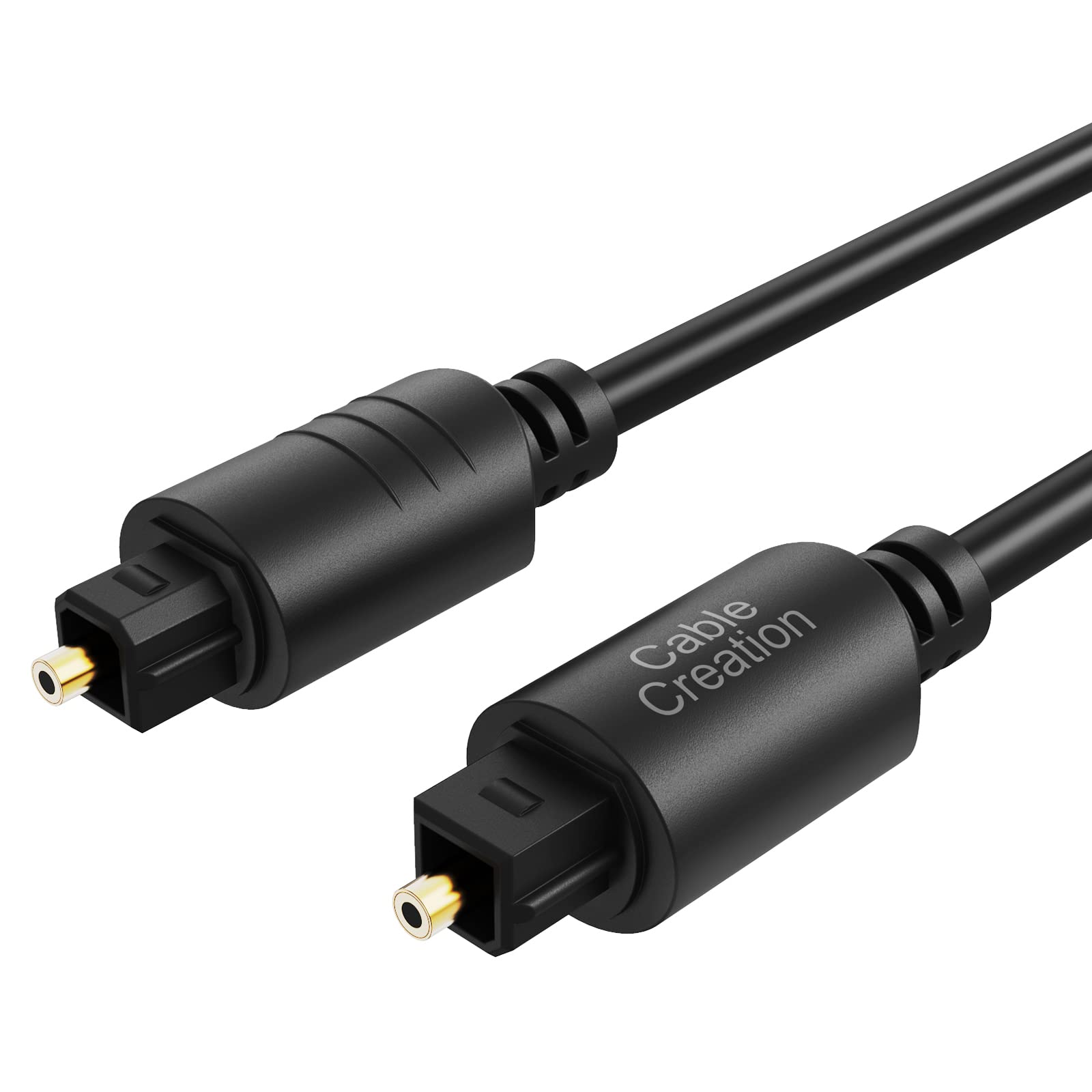Home>Devices & Equipment>Car Audio>What Does A Crossover Do In Car Audio
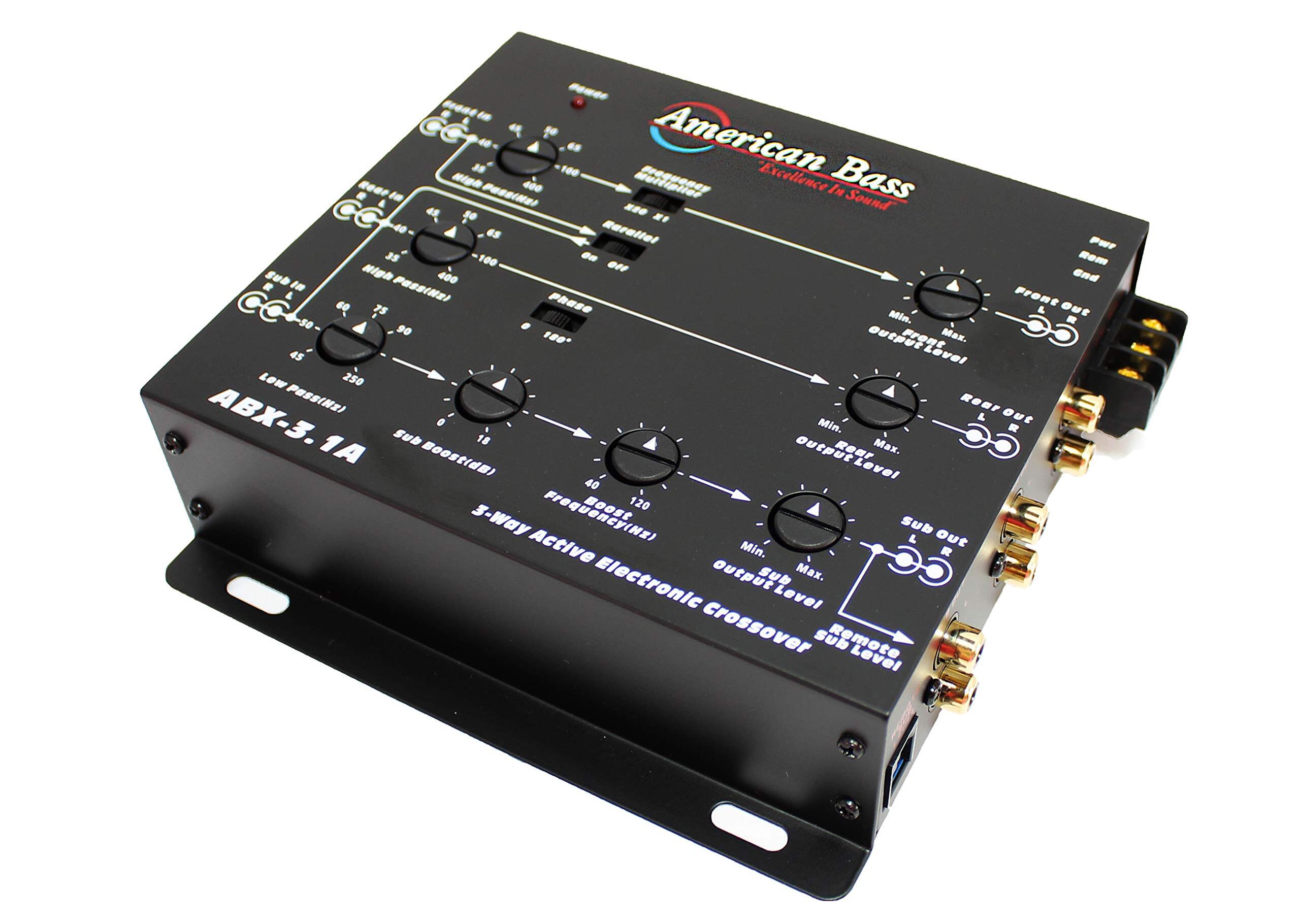

Car Audio
What Does A Crossover Do In Car Audio
Modified: February 18, 2024
Learn about the role of a crossover in car audio systems and how it enhances the sound quality. Discover why a crossover is an essential component for optimal car audio performance.
(Many of the links in this article redirect to a specific reviewed product. Your purchase of these products through affiliate links helps to generate commission for AudioLover.com, at no extra cost. Learn more)
Table of Contents
Introduction
Welcome to the world of car audio, where the power of sound transforms your driving experience. If you’re an audiophile or simply love high-quality music on the go, you probably already know the importance of a good car audio system. But have you ever wondered what makes that system sound so incredible? One crucial component that plays a significant role in delivering outstanding sound performance is the crossover.
A crossover is a device that manages and directs audio signals to the appropriate speakers in your car audio system. It ensures that each speaker receives only the frequencies it is designed to handle, resulting in cleaner and more accurate sound reproduction. Whether you’re a casual listener or a passionate connoisseur of music, understanding the role and functionality of a crossover can help you make informed decisions when it comes to upgrading your car audio system.
In this article, we’ll delve into the world of crossovers, exploring their purpose, types, and benefits in the context of car audio. We’ll also discuss some key considerations to keep in mind when selecting a crossover for your vehicle. So, let’s get started and uncover the secrets behind achieving superior sound quality on your next road trip.
Definition of a Crossover
A crossover, in the context of car audio, is an electronic device that divides an audio signal into different frequency ranges and sends each range to the appropriate speaker or driver in a speaker system. It ensures that the individual speakers in the system only reproduce the specific frequencies they are designed to handle, resulting in optimized sound quality and clarity.
Think of a crossover as a traffic conductor for sound waves. It works by separating the audio signal into different bands of frequencies, such as low, midrange, and high frequencies, and then directs each frequency band to the respective speaker component that can accurately reproduce it. By doing so, the crossover prevents the speakers from trying to reproduce frequencies they are not designed for, which can lead to distortion, muddiness, and overall poor sound quality.
There are various types of crossovers used in car audio, including passive crossovers and active crossovers. Passive crossovers are typically included with component speaker systems, while active crossovers require additional electronic components and offer more flexibility and control over the audio signal.
Now that we have a basic understanding of what a crossover is, let’s explore the purpose it serves in car audio systems and why it is an essential component for achieving optimal sound performance.
Purpose of a Crossover in Car Audio
The primary purpose of a crossover in car audio is to ensure that each speaker in the system reproduces the specific frequencies it is designed to handle, thereby maximizing sound quality and preventing distortion. Let’s dive deeper into why crossovers are crucial in achieving optimal audio performance in your vehicle.
1. Frequency Division: Crossovers effectively divide the audio signal into different frequency ranges, such as bass, midrange, and treble. By doing so, they ensure that each speaker receives only the frequencies it is capable of reproducing accurately. This prevents speakers from working outside their designed range, which can result in distorted sound and potential damage to the speaker components.
2. Speaker Protection: Crossovers act as a protection mechanism for your speakers. By directing the appropriate frequencies to each speaker component, crossovers prevent excessive strain on the speakers, reducing the risk of damage caused by overloading with frequencies they cannot handle. This prolongs the lifespan of your speakers and helps maintain their optimal performance over time.
3. Sound Imaging and Clarity: By sending specific frequency ranges to the appropriate drivers, crossovers help create a balanced soundstage and enhance sound imaging. This means that instruments and vocals are accurately positioned within the sound field, providing a realistic and immersive listening experience. Crossovers also help reduce unwanted intermodulation distortion, ensuring cleaner and more detailed audio reproduction.
4. Eliminating Frequency Overlap: In multi-driver speaker systems, such as component speaker setups, crossovers play a vital role in preventing frequency overlap between the different speaker components. Overlapping frequencies can lead to phase cancellation and muddiness in the sound. By dividing the signal and directing the frequencies to the appropriate drivers, crossovers eliminate this issue, resulting in improved clarity and separation between different instruments and vocals.
5. Customization and Sound Tailoring: Different speakers have different strengths and weaknesses when it comes to frequency response. Crossovers allow you to customize the sound by adjusting the crossover points and slopes to match the characteristics of your speakers. This enables you to tailor the sound to your preferences, optimizing the audio reproduction for your specific car audio setup.
Overall, the purpose of a crossover in car audio is to ensure that each speaker operates within its intended frequency range, protecting the speakers from damage, and delivering superior sound quality with improved imaging, clarity, and separation. Now that we understand the importance of crossovers in car audio, let’s explore the different types of crossovers commonly used in vehicle sound systems.
Types of Crossovers Used in Car Audio
When it comes to car audio, there are two primary types of crossovers commonly used: passive crossovers and active crossovers. Each type has its advantages and considerations. Let’s explore these types in more detail.
1. Passive Crossovers:
- Passive crossovers are the most common type of crossover used in car audio systems.
- They are typically included with component speaker systems, which consist of separate woofers, tweeters, and sometimes midrange drivers.
- Passive crossovers are “pre-built” crossovers that come with fixed crossover points and slopes.
- They are relatively easy to install as they require minimal wiring and no additional power source.
- Passive crossovers also provide basic level control, allowing you to adjust the output level of individual speakers.
- However, because passive crossovers are pre-built, they offer less flexibility in terms of customization and fine-tuning compared to active crossovers.
2. Active Crossovers:
- Active crossovers are more advanced and offer greater flexibility and control over the audio signal.
- They require additional electronic components, including a separate power supply or amplifier for each speaker.
- Active crossovers divide the audio signal before amplification, allowing you to precisely adjust crossover points, slopes, and output levels for each speaker.
- They offer more customization options, making it easier to match the characteristics of your speakers and optimize the sound reproduction.
- Active crossovers also provide additional features like phase correction, time alignment, and equalization.
- However, active crossovers require more complex installation and often come at a higher cost compared to passive crossovers.
When choosing between passive and active crossovers, consider your budget, level of control desired, and the overall complexity of your car audio system. Passive crossovers are a common choice for those seeking a more straightforward setup, while active crossovers are favored by enthusiasts looking for precise customization and optimization.
Now that we have explored the different types of crossovers, let’s examine the benefits and advantages of using a crossover in your car audio system.
Passive Crossovers
Passive crossovers are a popular type of crossover used in car audio systems, particularly with component speaker setups. These crossovers come pre-built and are designed to divide the audio signal into different frequency ranges for each speaker. Let’s take a closer look at passive crossovers and their characteristics:
- Easy Installation: Passive crossovers are relatively easy to install, making them a popular choice for car audio enthusiasts. They require minimal wiring and do not require an additional power source or amplifier for each speaker.
- Cost-Effective: Passive crossovers are often included with component speaker systems, making them a cost-effective option for achieving a better sound quality. They come as part of the speaker package, saving you the hassle of purchasing separate crossovers.
- Fixed Crossover Points: Passive crossovers have fixed crossover points and slopes. While they provide basic frequency division, they do not offer the flexibility to adjust the crossover frequency or slope to match the characteristics of your specific speakers.
- Level Control: Passive crossovers often include basic level control for each speaker. This allows you to adjust the output level of individual speakers, balancing the sound according to your preferences.
- Simplified Wiring: With passive crossovers, the wiring is simplified as the crossover is integrated into the speaker system. This makes installation easier and ensures a neater and more organized setup.
- Less Control and Customization: Because passive crossovers come pre-built, they offer less control and customization options compared to active crossovers. You are limited to the fixed crossover points and slopes provided by the manufacturer.
Passive crossovers are a suitable choice for those who want an improved sound quality without the complexity of an active crossover setup. They provide a cost-effective solution and are suitable for most applications, especially if you are using a component speaker system. However, keep in mind that with passive crossovers, you have limited control over the sound characteristics and the ability to fine-tune the crossover points and slopes to optimize your system.
Next, we will explore the advantages of using a crossover in your car audio system and why it is worth considering for an enhanced audio experience.
Active Crossovers
Active crossovers are a more advanced and flexible type of crossover used in car audio systems. Unlike passive crossovers, active crossovers require additional electronic components and offer greater control over the audio signal. Let’s delve into the characteristics and advantages of active crossovers:
- Precise Frequency Control: Active crossovers allow you to have precise control over the crossover frequency, slope, and equalization for each speaker. This level of customization enables you to match the characteristics of your speakers and optimize the sound reproduction.
- Greater Flexibility: With active crossovers, you have the ability to set different crossover points for different speakers in your system, such as separate frequency bands for woofers, midrange drivers, and tweeters. This flexibility ensures a more precise and accurate sound reproduction, resulting in enhanced clarity and separation.
- Advanced Features: Active crossovers often come with additional features like phase correction, time alignment, and equalization. These features allow you to further fine-tune the sound and correct any acoustic anomalies in your car’s interior, resulting in a more balanced and immersive audio experience.
- Individual Amplification: Active crossovers require separate amplifiers or power channels for each speaker. This allows each speaker to receive its own dedicated power supply, ensuring efficient power distribution and minimizing distortion.
- Improved Signal-to-Noise Ratio: Active crossovers process the audio signal before amplification, which helps reduce noise and interference that can be introduced during the amplification stage. This results in a cleaner and more detailed sound reproduction.
- Complex Installation: The installation of active crossovers is more complex compared to passive crossovers. They require additional wiring and amplifiers for each speaker, adding to the overall complexity of the system.
- Higher Cost: Active crossovers, due to their additional components and advanced features, typically come at a higher cost compared to passive crossovers. However, they provide a greater level of control and customization, making them popular among audio enthusiasts.
Active crossovers are the preferred choice for those seeking a high level of control and customization over their car audio system. They offer precise frequency control, advanced features, and greater flexibility. If you are looking to optimize the sound reproduction in your car and have the budget and technical know-how, active crossovers provide an excellent solution to achieve exceptional audio quality.
Now that we have explored both passive and active crossovers used in car audio systems, let’s take a look at the benefits of using a crossover in your car audio setup.
Benefits of Using a Crossover in Car Audio
Using a crossover in your car audio system offers numerous benefits that contribute to improved sound quality and a more enjoyable listening experience. Let’s explore some of the key advantages of incorporating a crossover into your setup:
- Optimized Sound Quality: One of the primary benefits of using a crossover is improved sound quality. By directing the appropriate frequencies to each speaker, crossovers ensure that each speaker operates within its designed frequency range, minimizing distortion and maximizing clarity.
- Reduced Speaker Strain: Crossovers protect your speakers from strain by preventing them from reproducing frequencies they are not designed to handle. This prolongs the lifespan of your speakers and helps maintain their optimal performance over time.
- Enhanced Sound Imaging: Crossovers aid in creating a balanced soundstage and accurate sound imaging. By ensuring that each speaker focuses on its specific frequency range, crossovers help position instruments and vocals within the sound field, providing a more immersive listening experience.
- Improved Frequency Separation: Crossovers prevent frequency overlap between speakers, reducing phase cancellation and increasing the separation of different instruments and vocals. This results in clearer and more defined audio reproduction.
- Customization and Sound Tailoring: Crossovers offer customization options that allow you to adjust the crossover points, slopes, and equalization to match the characteristics of your speakers and personal preferences. This gives you the flexibility to tailor the sound to your liking and create a customized audio experience.
- Reduced Distortion: By ensuring that each speaker handles only the frequencies it is designed for, crossovers help minimize distortion caused by speakers attempting to reproduce frequencies beyond their capabilities. This leads to cleaner and more accurate sound reproduction.
- Better System Efficiency: Crossovers optimize the distribution of frequencies to each speaker, ensuring that they work together efficiently. This results in improved system efficiency, allowing you to achieve higher volume levels with less power and reducing the strain on your car’s electrical system.
Overall, incorporating a crossover into your car audio system provides a range of benefits, including enhanced sound quality, reduced speaker strain, improved imaging and separation, customization options, and increased system efficiency. By investing in a quality crossover and fine-tuning your system, you can enjoy a more immersive, detailed, and enjoyable audio experience on every drive.
Now that we understand the benefits of using a crossover, let’s explore some important considerations to keep in mind when choosing the right crossover for your car audio system.
Considerations When Choosing a Crossover
Choosing the right crossover for your car audio system is crucial to achieving optimal sound performance. Here are some important factors to consider when selecting a crossover:
- Type of Crossover: Determine whether you prefer a passive crossover that comes with component speaker systems or an active crossover that offers more flexibility and control. Consider the complexity of installation and customization options that best suit your needs.
- Crossover Points and Slopes: Look for a crossover that allows you to adjust the crossover points and slopes. This allows you to fine-tune the frequency division to match the characteristics of your speakers and achieve the desired sound reproduction.
- Speaker Compatibility: Ensure that the crossover you choose is compatible with your specific speakers. Different speakers have different frequency response capabilities, so it’s important to select a crossover that matches their requirements to achieve optimal sound quality.
- Budget and Quality: Consider your budget and the quality of the crossover. While cost-effective options are available, investing in a high-quality crossover can significantly enhance your audio experience. Research reputable brands and read reviews to ensure reliability and performance.
- Installation Requirements: Assess the installation requirements of the crossover. Active crossovers, in particular, may require additional wiring, amplifiers, and power sources. Ensure that the installation process aligns with your technical skills or if professional assistance is necessary.
- System Integration: Consider how the crossover integrates with your existing car audio system. Ensure compatibility with your head unit, amplifier, and other audio components to ensure seamless integration and avoid compatibility issues.
- Room for Future Upgrades: If you plan to upgrade your car audio system in the future, consider a crossover that allows for expansion and additional components. This ensures that your crossover can accommodate any changes or enhancements you may make.
By considering these factors, you can choose a crossover that suits your specific needs, integrates well with your existing setup, and helps you achieve the desired sound quality.
As we conclude our exploration of crossovers in car audio, let’s recap the importance of using a crossover and the benefits it brings to your overall listening experience.
Conclusion
A crossover is an essential component in car audio systems, responsible for dividing the audio signal into different frequency ranges and directing them to the appropriate speakers. By ensuring that each speaker operates within its designed frequency range, crossovers help optimize sound quality, prevent distortion, and enhance the overall listening experience.
Passive crossovers, commonly included with component speaker setups, offer a cost-effective solution with simplified installation. On the other hand, active crossovers provide more flexibility, customization options, and advanced features, making them a popular choice for audio enthusiasts seeking optimal control over their sound system.
Using a crossover in your car audio system brings numerous benefits, including improved sound quality, reduced speaker strain, enhanced sound imaging, and the ability to customize and tailor the sound to your preferences. It helps minimize distortion, improve frequency separation, and optimize the efficiency of your audio system.
When choosing a crossover, consider factors such as the type of crossover, crossover points and slopes, compatibility with your speakers, budget, quality, installation requirements, system integration, and future upgrade possibilities.
By carefully selecting the right crossover and fine-tuning your car audio system, you can transform your driving experience into a captivating audio journey.
We hope this comprehensive guide has provided you with valuable insights into the world of crossovers in car audio, empowering you to make informed decisions and achieve an exceptional sound quality that enhances every road trip. Happy listening!

